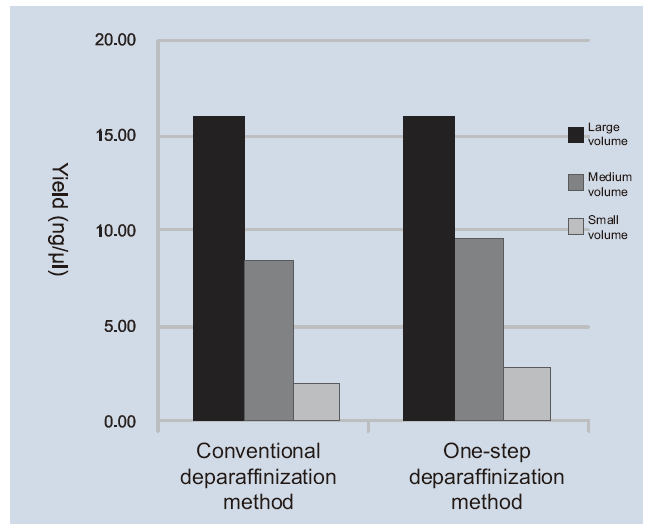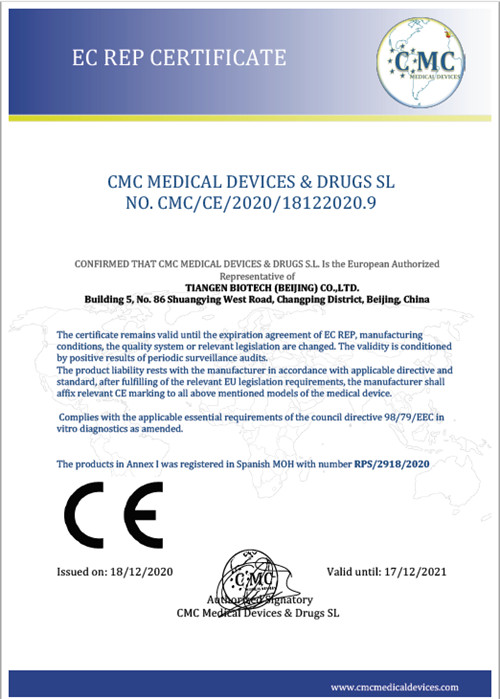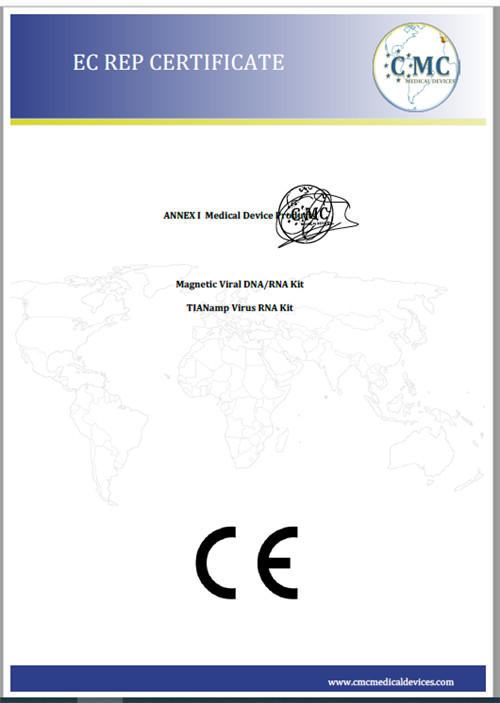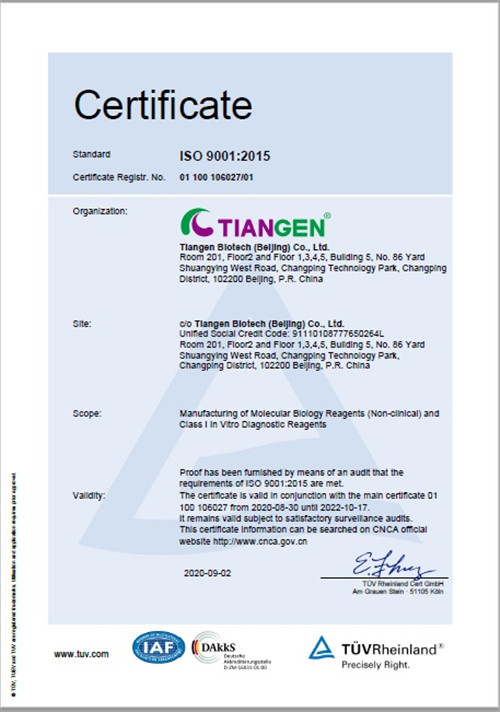 |
The results showed that for large volume samples, the extraction yields of the two methods were comparable; for samples with medium and small volume, the yield of the one-step deparaffinization method (perform with TGuide) was greater than that of the conventional deparaffinization method. Therefore, the one-step deparaffinization method not only simplifies the operation, reduces the risk, but also improves the extraction efficiency. Note: Large volume sample: the sectioning area is within 2.5-4 cm2 and the thickness is within 5-20 μm. Medium volume sample: the sectioning area is within 1.5-2.5 cm2 and the thickness is within 5-20 μm. Small volume sample: the sectioning area is within 0.2-1.5 cm2 and the thickness is within 5-20 μm. |









